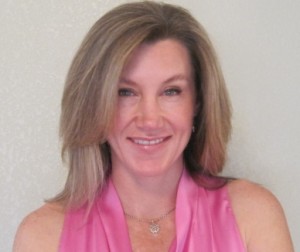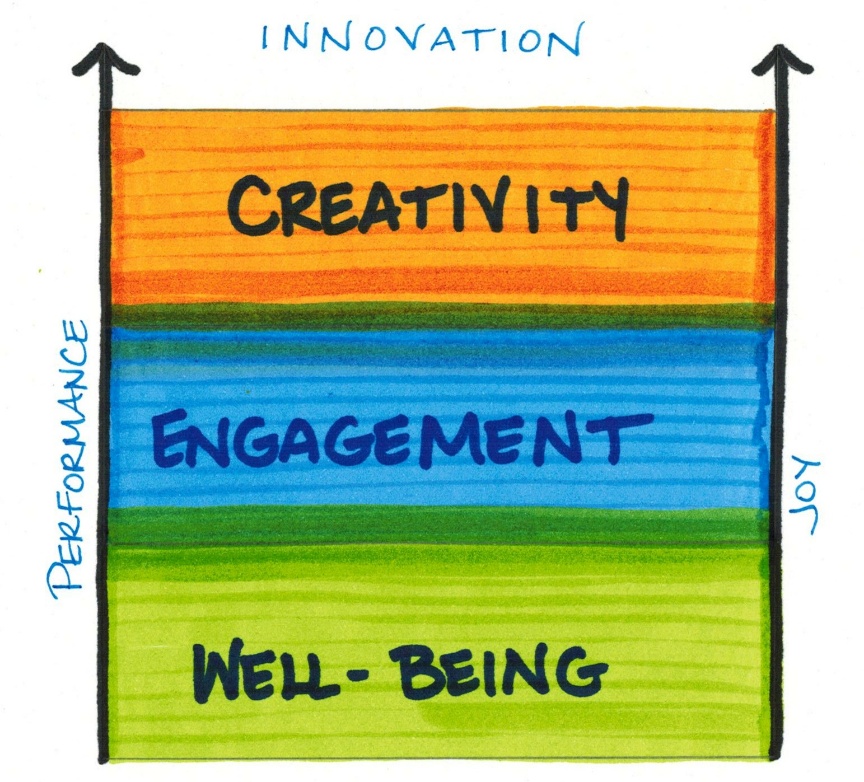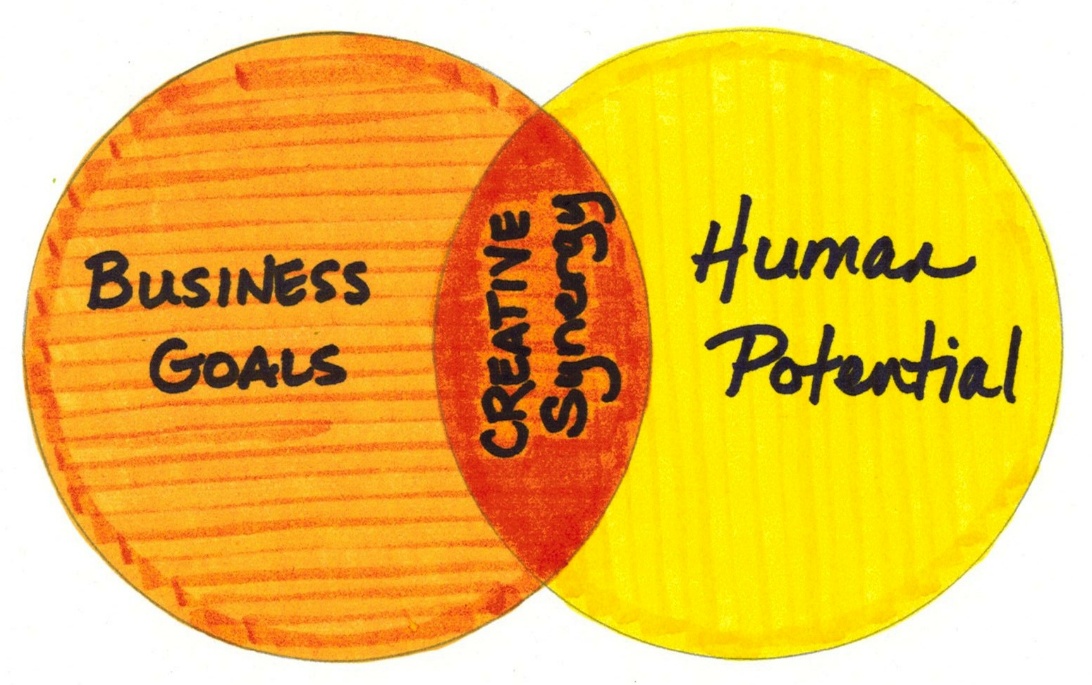Kirstin McGuire
Steve’s Story of Disengagement

Kirstin McGuire
“You there?” This is the message that awaits my friend Steve via instant messaging every single morning at exactly 8:00am at the office. It’s from his manager, Olivia, who also happens to be the owner of the company where Steve works as a salesperson. Without fail for eight months now, Steve is greeted with two words that he has learned to despise. Two words that make him feel untrusted and disengaged.
From Steve’s point of view, this message is nothing more than Olivia’s attempt to check up on him, to make sure his butt is in his office chair by exactly 8:00am. Steve is forty-six years old and has been a working professional for a couple of decades. He has successfully made it to work in a timely manner and done a good job for this company for the last eight months. He has no idea why Olivia is “tracking him”.
Steve recently realized that Olivia also keeps track of how much time he takes at lunch. One day, Steve had to run an errand during lunch that took an hour and ten minutes. After lunch, Olivia instant messaged Steve a few minutes after he arrived back at his desk, “Long lunch?”. Steve’s heart sank and he knew for sure what he had suspected from all those morning messages, that his boss was tracking his every move and every minute.
Steve is disheartened and doesn’t understand the lack of flexibility typically afforded professionals in businesses like this. At a deeper level, he is concerned that his value to the company is being measured by the hours he sits at his desk rather than his contribution. Even more troubling is his feeling that Olivia doesn’t trust him.
Olivia continues to demonstrate this behavior even after Steve discussed it with her. The result is that Steve feels unvalued, controlled and untrusted. On top of that, he feels marginalized because Olivia, who sits 30 yards from him, communicates via instant messaging instead of just talking to him in person. He doesn’t know what he has done to not be trusted and since he has already tried talking with Olivia, he doesn’t know what he can do to change things. To cope, he has disengaged. He shows up at 8:00am, but no longer gets excited about going to work and contributing. He spends his time looking for another job.
Chipping Away at Well-Being and Joy
We have all heard or experienced stories of nightmare managers–manipulative tyrants who spread fear and wield authority like a weapon. Steve’s story is a less dramatic, but no less damaging, assault on employee engagement. It’s the kind of thing that unfolds daily in workplaces everywhere. When managers define successful employee behavior according to time spent working, they are chipping away at employee well-being and joy, as well as damaging capacity for performance and innovation. Whether it is clock-watching or the expectation that working excessively long hours is the only path to reward, it is a recipe for disengagement. Without engagement, performance and innovation will suffer, and retention will be a challenge.
There is a deep and powerful connection between employee well-being and performance. Figure 1 below shows the hierarchical nature of how engagement builds upon well-being and creativity builds upon engagement. This model suggests that as the lower levels are fulfilled, the better able an employee will be to access the higher levels. For example, if Steve is unable to achieve the work-life balance that he needs to make him feel a sense of well-being, he will have more difficulty being engaged in his work because he will be distracted with thoughts of being unable to manage the non-work components of his life. If he is not engaged in his work, he will be unable and unwilling to access his innate creative strengths to come up with his best ideas and most high performing behavior at work. He will not be able to feel the joy of contributing and his performance will be low. He is unlikely to be the source of innovative ideas for the business.

Figure 1: Innovation Hierarchy
Due to their relationship with employees, managers have a direct impact on many of the factors that affect employees’ feelings of well-being, engagement and motivation, and ultimately, what level, if at all, employees will be willing and able to tap into their own creativity for the good of the business.
Olivia, like many managers, is unknowingly hampering her business results by undermining her employee’s ability to feel a basic sense of well-being in association to his work. Her attempt to control Steve’s time isn’t going to make him more productive. It’s, in fact, making him less productive because he feels frustrated and spends his creativity figuring out how to get out of that situation instead of using it to develop new relationships with customers and sell more product.
Moving from a Productivity Mind-set to a Creativity Mind-set
I recently wrote an in-depth article for Integral Leadership Review exploring the connection between joy, creativity and performance and introduced an approach to managing people that focuses on creating opportunities for joy through management practices that promote well-being, engagement and creativity. It’s called the Joyful Work Model™ and it’s based on the premise that until their job becomes a joy, people will be unwilling to dig deep and put their creativity on the line to deliver business results. (Learn more about the Joyful Work Model here.) If you want to bolster innovation and performance in your business, you need to create opportunities to build joy rather than chip away at it.
At the very core of this approach is an important, fundamental shift away from a productivity mind-set to a creativity mind-set. Productivity has to do with getting the most return out of every dollar spent. It is a measure of efficiency. Creativity has to do with developing ideas, products or solutions that are both unique and useful. It is a measure of value. Productivity is an economic and business construct that, while important, isn’t what inspires employees to greatness.
Employees are humans on a journey of growth and self-actualization. Whether they are consciously pursuing it or not, they are wired to move towards fulfilling their potential. As managers, if we want to achieve higher productivity and higher performance, we need to learn to find the common ground between the pursuit of business goals and the pursuit of human potential. Creativity is the overlapping area of opportunity.

Figure 2: Creative Synergy – Common Ground Between Business Goals and Human Potential
Most people spend a significant portion of their life at work or thinking about work. Careers represent an immense opportunity for creative expression and self-actualizing growth. Unfortunately, the workplace often falls woefully short in being a satisfying channel for expressing the soul’s longing to be creative. Yet, this is completely at odds with the need for businesses and organizations to be innovative in order to effectively compete in an increasingly complex and ever-changing marketplace.
All of us are innately creative and diverse in the ways we express our highest creative potential. By recognizing and aligning innate creative strengths with professional work, the ability to contribute expands. If managers can help people tap into their creative potential and support them with an environment where they are encouraged, recognized and feel safe to express their strengths, they can begin to access the creativity that lies dormant within our organizations. Productivity and performance become the end result of generating creativity.
Ultimately, what we want are highly engaged employees that deliver great business results because they are dialed into their innate creative strengths and feel such meaning in what they are doing that their creative output at work is highly valuable. What we don’t want are disengaged clock watchers or workers who put in long hours to make sure their list of activities completed is longer than anyone else’s list. We want quality ideas from joyful employees who feel good about their ability to contribute at work and live balanced lives. That means as managers, we need to focus on managing for creativity rather than productivity. It’s not about output or hours worked. It’s not about focusing on doing more with less. It has to be about the level of creativity and the value of that for both the business and the individual.
Imagine how this simple shift in mind-set could improve things for both Olivia and Steve. What if Olivia’s first thought each day was not, “Let me see if Steve is at his desk” and instead it was, “What can I do today to cultivate Steve’s creativity?” This question would lead to an entirely new set of thoughts and behaviors that would enable Olivia and Steve to engage in a common ground of creative synergy that benefits the business by tapping into Steve’s natural desire to contribute and grow by expressing his innate creative strengths.
Putting it Into Practice
I invite you to try it for a week and tell me what happens. Write the following on a notecard, your whiteboard or wherever you will see it often and set your intention to cultivate creativity on a daily basis:
What can I do today to cultivate creativity in myself and others?
What happens? How does it change what you do that day or how you engage with others? Do other people notice? Do you notice an increase in engagement or creativity in yourself or others? Are you able to achieve your business goals while holding the thought of cultivating creativity as opposed to productivity?
About the Author
Kirstin McGuire is a catalyst for the fulfillment of human creative potential. She has over 20 years of experience writing, collaborating with leaders, creating strategic communications, and facilitating workshops to ignite the potential for new levels of creativity and engagement in business. Follow her on Twitter: @JoyfulKirstin
